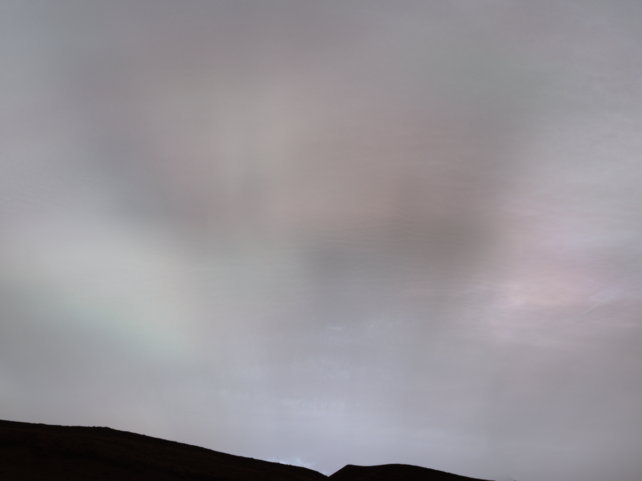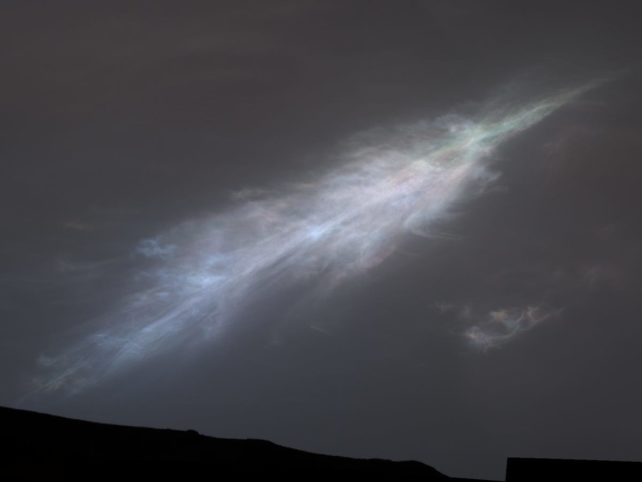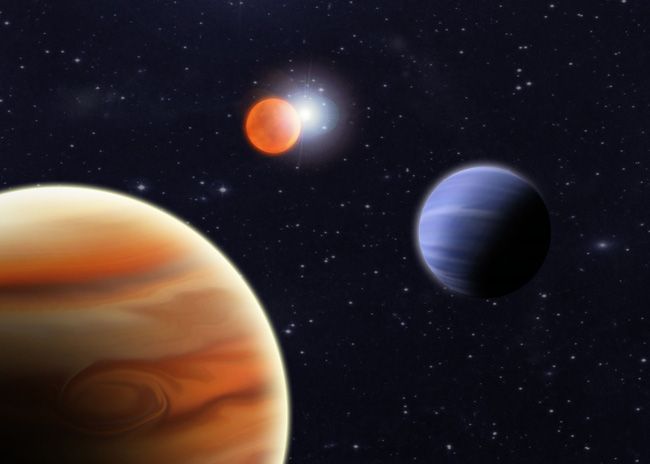Key Takeaways:
- Curiosity rover captures stunning images of rare high-altitude clouds on Mars, revealing ethereal sun rays filtering through these otherworldly formations.
- These clouds, likely composed of carbon dioxide ice (dry ice), showcase mesmerizing colors of green and pink as the sunlight passes through them.
- An iridescent, feather-shaped cloud spotted in the images indicates particles changing size across the cloud, providing insights into cloud evolution.
- The pictures, assembled from 28 images sent by the rover, were enhanced to emphasize their highlights, offering a captivating view of Martian sunsets.
- This survey expands on earlier observations, utilizing Curiosity’s color camera to study these rare occurrences and is expected to yield significant insights into Martian cloud dynamics.

In a remarkable photographic first, NASA’s Curiosity rover recently unveiled a mesmerizing glimpse into the Martian atmosphere, capturing rare high-altitude clouds that allowed sunlight to filter through, painting the Martian sky with hues reminiscent of a ghostly white-tinged sunset. This groundbreaking moment occurred on February 2 as the Sun dipped behind a cluster of twilight clouds hovering at an unusually lofty altitude.
These enigmatic clouds, believed to be composed of carbon dioxide ice, exhibited an otherworldly spectacle as the Sun’s rays penetrated their midst, casting a spellbinding play of muted green and pink tones across their expanse. The rover’s lens also captured a celestial marvel—a feather-shaped cloud adorned with iridescence, bathing Mars in a mesmerizing palette of pink, green, and blue hues.
Atmospheric scientist Mark Lemmon highlighted the significance of this iridescence, noting that it signifies uniform particle sizes within segments of the cloud while revealing variations in particle size across different parts. This revelation offers invaluable insights into the dynamic evolution of these extraterrestrial formations over time.

These captivating portraits were meticulously crafted from a series of 28 images beamed back to Earth by the rover and were expertly edited by NASA to accentuate their most striking elements. Building upon a preliminary survey conducted in 2021, where Curiosity observed luminous twilight clouds traversing the Martian sky, this new endeavor relies extensively on the rover’s color camera to delve deeper into the intricacies of these rare atmospheric phenomena.
Spanning from January to mid-March, this ongoing survey holds promise for a trove of fresh data and revelations concerning these elusive clouds. Cloud occurrences on Mars remain a rarity due to the planet’s scant atmospheric water content, with its air boasting a mere one percent of Earth’s atmospheric density.

Typically manifesting near the Martian equator during the planet’s coldest phase, when its orbit takes it farthest from the Sun, these clouds offer scientists a fleeting yet invaluable opportunity to comprehend the dynamics of a distinctly different atmospheric composition.
The culmination of these panoramic vistas and scientific inquiries signifies a pivotal moment in our understanding of Martian atmospheric behavior. With Curiosity serving as an intrepid explorer, sending back visual treasures and invaluable scientific data, humanity’s curiosity about the Red Planet continues to be fueled by these groundbreaking endeavors.



